13 Humidity-Loving Plants Perfect for Your Bathroom
If you’re looking to add some greenery to your bathroom, choosing plants that thrive in high humidity is a great way to create a lush, vibrant space. Many indoor plants flourish in the moist conditions typically found in bathrooms, where steam from showers and lower light levels are common. Whether you’re aiming to purify the air, add a pop of color, or just enjoy the calming effect of nature, these humidity-loving plants will thrive in your bathroom environment.
This post may contain affiliate links, which helps keep this content free. Please read our disclosure for more info.
Boston Fern (Nephrolepis exaltata)

Boston ferns thrive in humid environments, making them ideal for bathrooms with high moisture levels. These plants naturally grow in shady, moist areas, which makes the bathroom’s steam and humidity perfect for them. Their feathery fronds will flourish in such conditions, and they appreciate being in areas where the temperature stays warm and the humidity is high. Boston ferns also prefer indirect light, so placing them near a bathroom window with filtered sunlight or even in a low-light spot will work just fine.
To care for a Boston fern, ensure the soil remains consistently moist but not soggy. Occasional misting can help maintain humidity levels, especially in drier months when the bathroom air may not be as humid. It is important not to let the soil dry out completely, as these ferns thrive best with regular moisture.
Spider Plant (Chlorophytum comosum)

Spider plants are known for their resilience and are well-suited to bathrooms, as they thrive in humid environments. These plants prefer moist air and benefit from the steam created in bathrooms after hot showers. Spider plants are also flexible when it comes to light conditions, making them a perfect choice for rooms with varying amounts of sunlight. Whether your bathroom has a lot of natural light or is darker, a spider plant will adapt, though it grows best in indirect sunlight.
Spider plants are relatively low-maintenance, requiring only occasional watering. The soil should be allowed to dry out a little between waterings, and it should not be overwatered. When placed in a bathroom, the humidity will help keep their roots healthy, and their long, arching leaves add an attractive, natural touch to the space.
Peace Lily (Spathiphyllum)
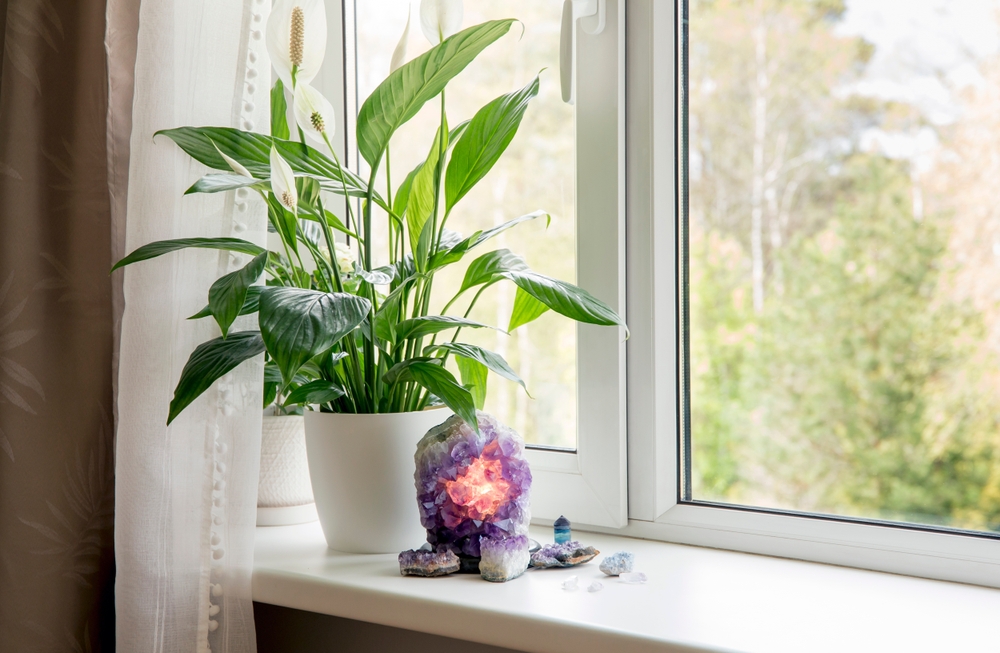
Peace lilies are known for their ability to thrive in humid environments, which makes them a great choice for bathrooms. These plants enjoy the extra moisture in the air, making the bathroom’s humidity ideal for their growth. Peace lilies also do well in low light, which is often a common feature in many bathrooms. Their dark green leaves and elegant white blooms bring a sense of peace and tranquility to any room.
To care for a peace lily in the bathroom, ensure the soil stays evenly moist. Peace lilies are forgiving plants, so if you forget to water them for a few days, they will often perk back up once watered. In return, they reward you with beautiful, white flowers and help purify the air, making them both decorative and functional.
Snake Plant (Sansevieria trifasciata)

Snake plants are one of the most adaptable plants you can have in a bathroom, as they can tolerate both high humidity and low light. These resilient plants are known for their upright, sword-shaped leaves that add an architectural element to any room. While snake plants are typically found in dry conditions, they thrive in the moisture-rich air of a bathroom, especially after a hot shower. They also don’t require a lot of light, making them perfect for areas with little or no natural sunlight.
To care for a snake plant, make sure the soil is well-drained and allow it to dry out between waterings. Overwatering can lead to root rot, so it is best to err on the side of caution. Snake plants are also great for improving indoor air quality, making them a great addition to any bathroom.
English Ivy (Hedera helix)
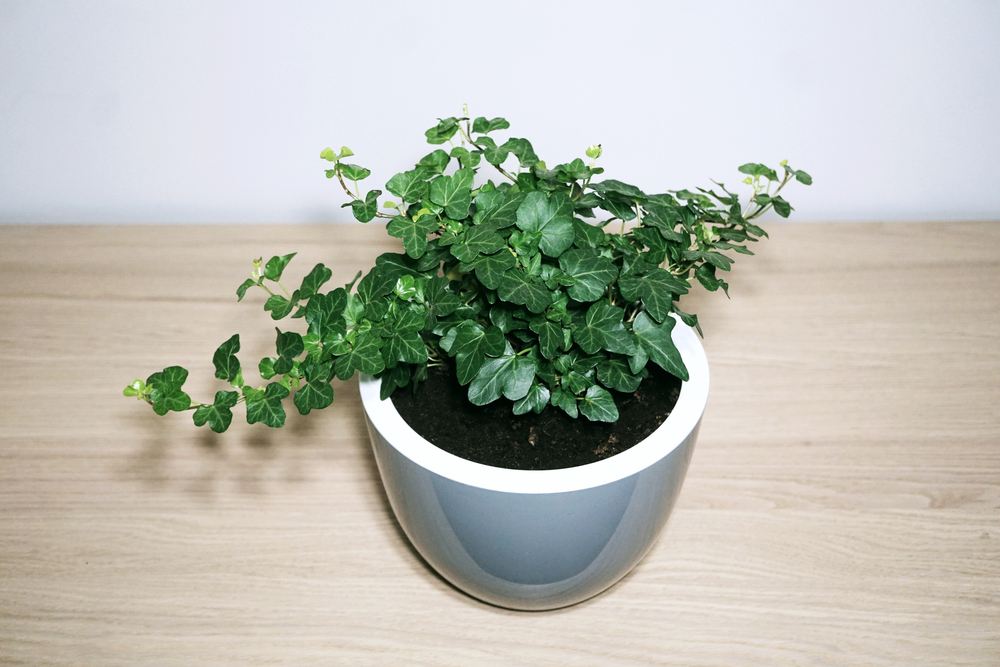
English ivy is an excellent plant for the bathroom, as it thrives in both high humidity and low light conditions. Ivy is a climbing vine that enjoys moist environments, which makes the bathroom’s humid air a perfect setting for it. It is commonly grown in hanging baskets or as a trailing plant, so it can be placed in various spots around the bathroom. English ivy can even help purify the air by removing toxins, which is an added benefit for indoor spaces.
To care for ivy, keep the soil moist but not overly soggy, and ensure it has access to indirect light. English ivy can tolerate low light, but will grow faster with more sunlight. Regular misting will help keep the plant healthy in high-humidity areas like the bathroom.
Aloe Vera

Aloe vera is a great choice for bathrooms due to its tolerance for both humidity and sunlight. While it is often associated with dry climates, aloe vera can benefit from the humidity in a bathroom, especially in the warmer months. It prefers bright, indirect light but can adapt to slightly lower light levels, making it a good fit for bathrooms with windows that let in some light. The aloe plant’s ability to store water in its thick, fleshy leaves makes it relatively low-maintenance, as it doesn’t require frequent watering.
When caring for aloe vera, allow the soil to dry out completely between waterings. Aloe vera prefers to be watered less frequently, and overwatering can lead to root rot. This plant also offers the added benefit of its gel, which is soothing for burns and skin irritation, making it a practical choice for the bathroom.
ZZ Plant (Zamioculcas zamiifolia)
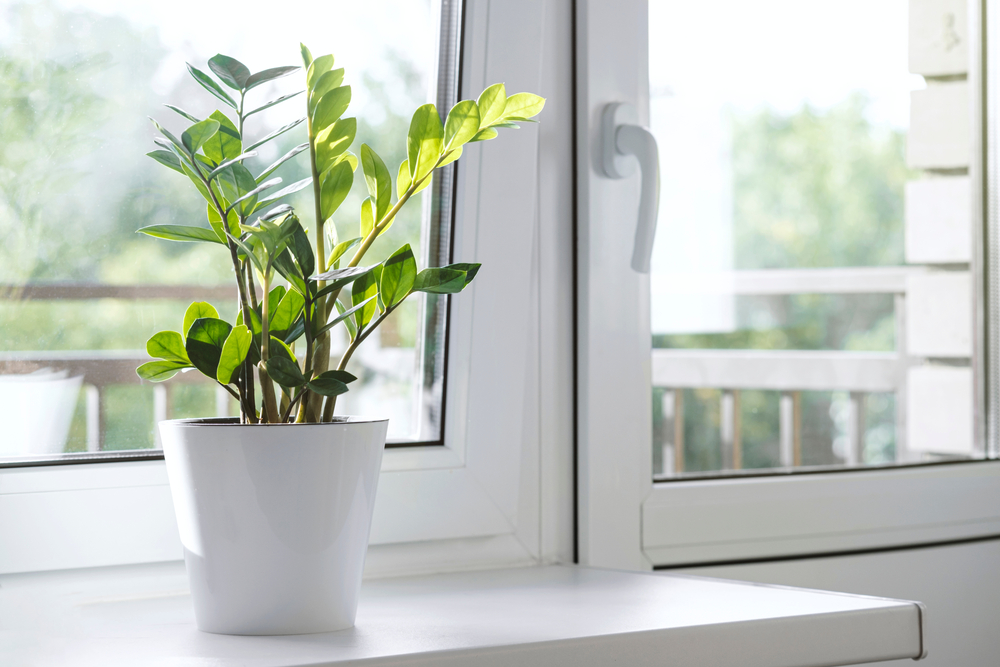
ZZ plants are known for their ability to survive in less-than-ideal conditions, including low light and high humidity. This makes them perfect for bathrooms, especially those with limited natural light. The glossy, dark green leaves of the ZZ plant add an elegant touch to any room, and its ability to thrive on neglect makes it an ideal plant for beginners. While it can survive in a variety of light conditions, it prefers indirect sunlight, which is common in bathrooms.
ZZ plants require minimal watering, and it is important to allow the soil to dry out between waterings. The humidity in the bathroom helps keep this plant healthy, but it is essential not to overwater, as this can lead to root rot. ZZ plants are also resilient, bouncing back from periods of neglect without much trouble.
Bamboo (Dracaena sanderiana)

Bamboo is an excellent plant for bathrooms because it thrives in both humidity and low light. Often grown in water, bamboo is well-suited to bathroom conditions, as the moisture in the air helps keep the plant hydrated. Bamboo can be placed in a decorative container with water or planted in soil, making it a versatile choice for bathroom decor. The plant’s slender, upright stalks add a modern, zen-like atmosphere to any bathroom, making it both functional and aesthetically pleasing.
To care for bamboo, ensure that the water level is consistent if it is grown in water. If planted in soil, make sure the soil stays moist, but not overly wet. Bamboo requires very little maintenance and does well in low to moderate light, making it an easy-to-care-for option for bathrooms.
Pothos (Epipremnum aureum)

Pothos are perfect for bathrooms because they thrive in humid environments and can tolerate a range of light conditions. Known for their trailing vines and heart-shaped leaves, pothos grow beautifully in bathroom spaces where they can hang from shelves, baskets, or be trained to climb walls. They thrive in humidity and appreciate the steam from showers, which helps them grow rapidly. Pothos also does well in low light, so they can thrive in bathrooms with minimal sunlight.
To care for pothos, make sure the soil remains consistently moist but not overly saturated. Regular misting can help maintain their preferred humidity levels, especially in drier months. These plants are also very low-maintenance, making them a great choice for bathrooms that do not get a lot of attention. In addition, pothos can purify the air, which adds even more value to their presence in your bathroom.
Cast Iron Plant (Aspidistra elatior)
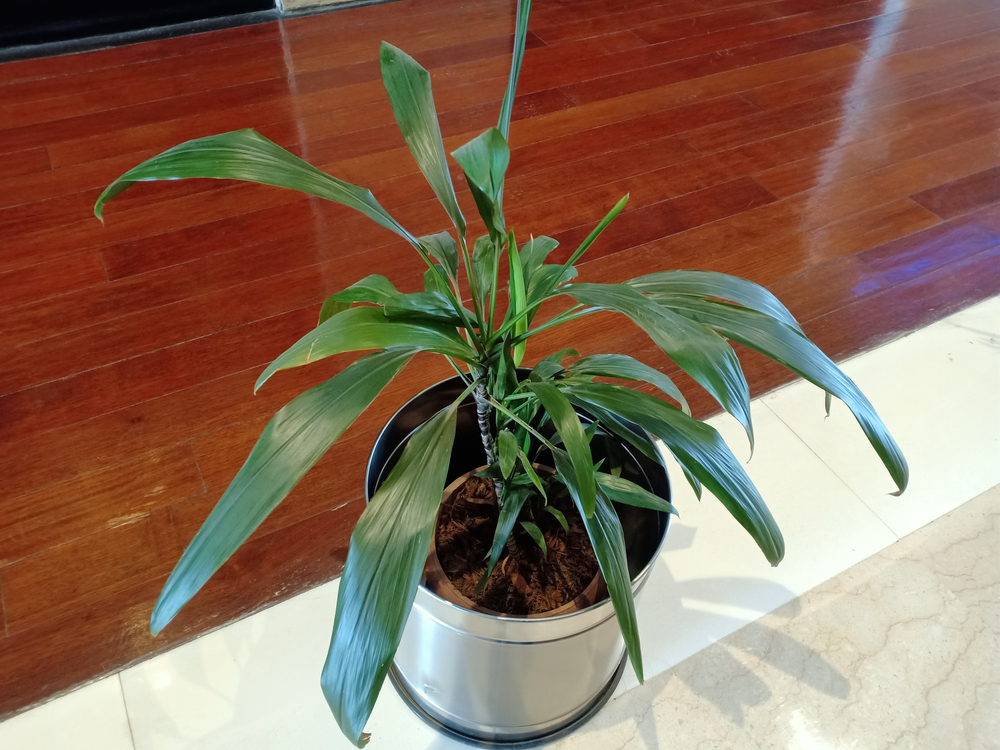
The cast iron plant is a hardy, resilient plant that thrives in high humidity, making it a great fit for the bathroom. This plant is perfect for bathrooms that have low light, as it can survive in shady areas where other plants might struggle. The cast iron plant is known for its ability to withstand neglect, fluctuating temperatures, and moisture-rich air, making it a reliable choice for busy households. Its dark green, glossy leaves bring a touch of elegance to any bathroom setting.
To care for a cast-iron plant, keep its soil moist but ensure it does not become waterlogged. This plant prefers moderate humidity and benefits from misting, especially during the drier months. The cast iron plant is incredibly low-maintenance, requiring little more than occasional watering and minimal light, making it a perfect addition to bathrooms where you might not have time to fuss over plants.
Chinese Evergreen (Aglaonema)

Chinese evergreens are perfect for humid bathrooms, as they thrive in moist environments. These plants are also very adaptable to low light conditions, which makes them an ideal option for bathrooms with minimal natural light. The plant’s beautiful, patterned leaves in shades of green, silver, and even red add a pop of color to the bathroom. Chinese evergreens can tolerate fluctuations in temperature and humidity, making them very forgiving plants for bathroom spaces.
To keep a Chinese evergreen healthy, keep the soil moist but not soggy, and mist the plant regularly to maintain optimal humidity. They can thrive in indirect light, so placing them in the bathroom where there is filtered sunlight will allow them to flourish. Chinese evergreens are low-maintenance plants that add beauty and air-purifying benefits to your bathroom.
Bromeliad
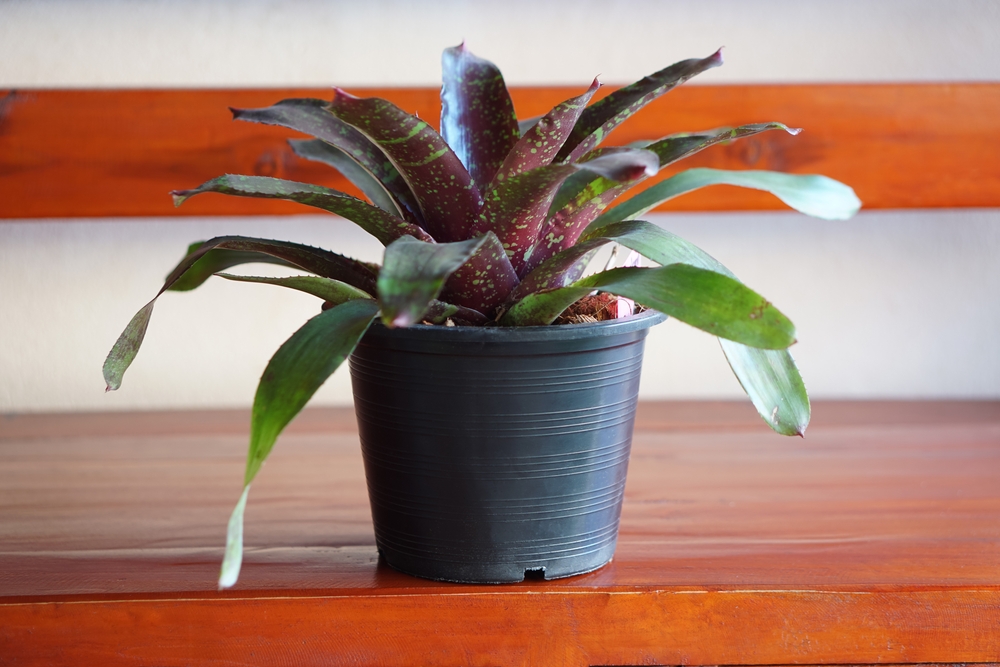
Bromeliads are tropical plants that thrive in humid environments, making them an excellent choice for bathrooms. Their striking, colorful flowers add a bold touch to any bathroom, while their unique foliage creates a sense of texture and interest. Bromeliads enjoy the steam from showers and can tolerate lower light levels, which makes them perfect for bathrooms with indirect sunlight. Their ability to grow in both soil and water gives them flexibility when deciding where to place them in your bathroom.
To care for a bromeliad, make sure the soil is kept moist, but avoid letting the plant sit in standing water. Regular misting will help maintain the humidity levels they love, and it will encourage their vibrant blooms. These plants require a little more attention than some other bathroom-friendly plants, but their stunning flowers and ability to thrive in high humidity make them well worth the effort.
Maidenhair Fern (Adiantum)
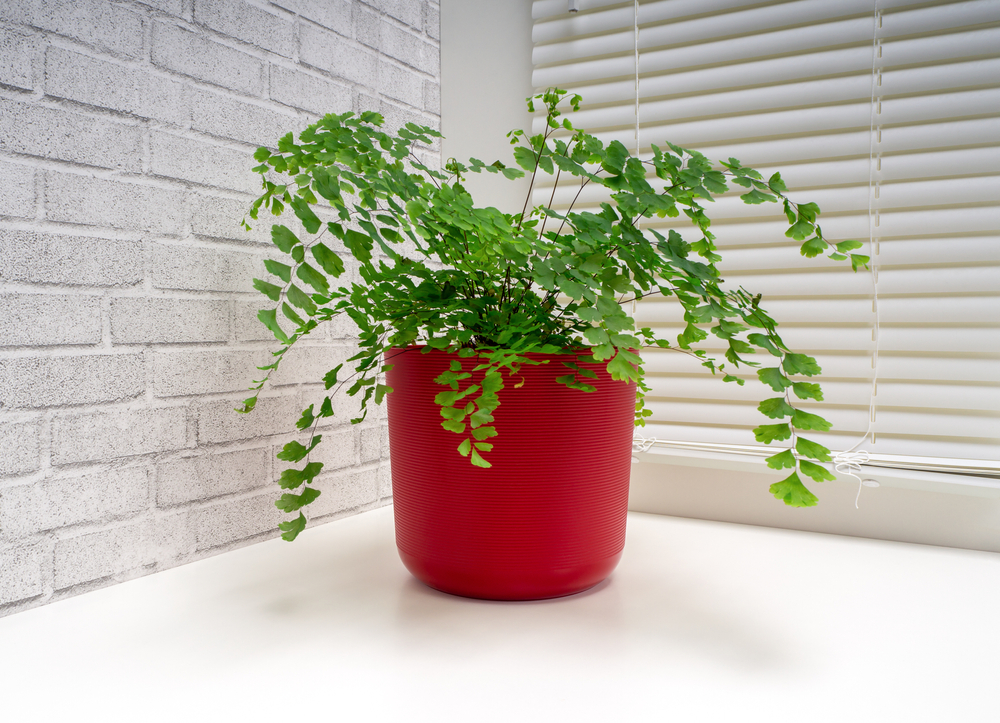
Maidenhair ferns thrive in humid environments and make an excellent addition to bathrooms. Their delicate, feathery fronds are a beautiful contrast to the more structured leaves of other plants. These ferns love moisture, and the high humidity in a bathroom is perfect for them. Maidenhair ferns also appreciate indirect light, making them a great fit for bathrooms with minimal natural light. Their lush green foliage adds a sense of elegance and softness to any bathroom space.
To care for maidenhair ferns, make sure the soil is consistently moist, but not soggy. Mist the plant regularly to maintain the high humidity levels it prefers, and avoid letting the soil dry out completely. Maidenhair ferns are more sensitive than some other plants, so they may require a little more attention, but their beauty and thriving nature in a humid bathroom make them well worth the care.
This article originally appeared on Avocadu.
